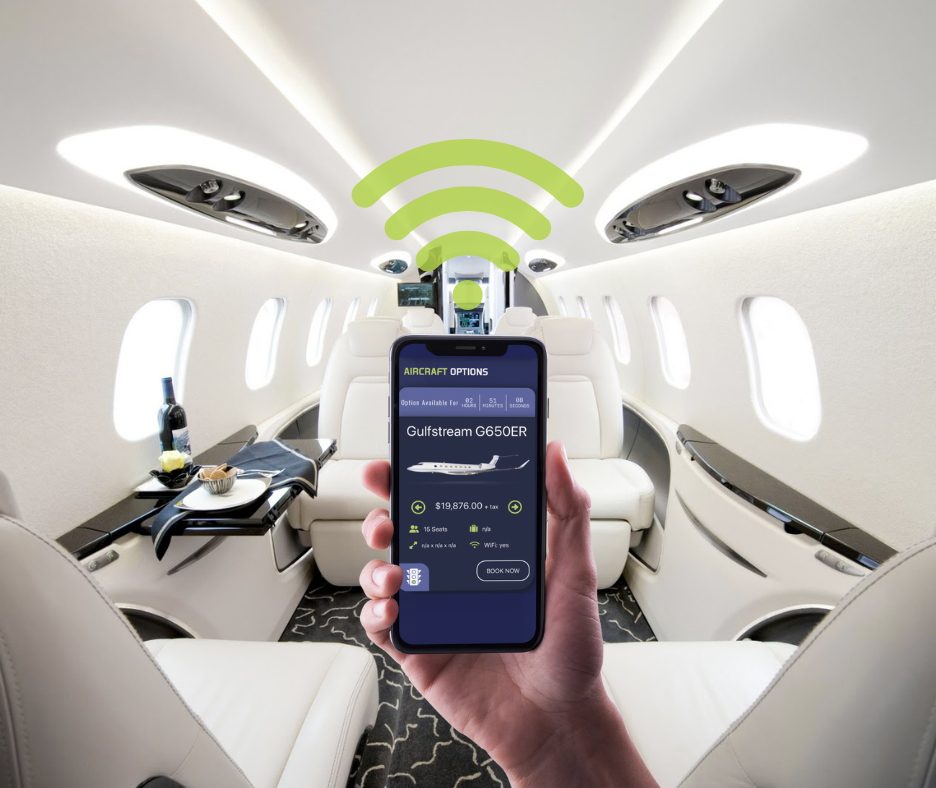
Types of OnBoard WiFi
With the rise of the digital world, it seems like you can’t to anything nowadays without an internet connection. With digital communication at an all-time high, the classic phone call from a friend is rare, and using the internet to digitally communicate with friends, family, co-workers, and clients is ever-demanding. In addition, entertainment has become almost entirely digital. Whether it be reading, watching, or writing, you’re likely doing so on a digital landscape. That includes working. Zoom meetings, teams chats, and digital marketing are quintessential element of any modern business. With that said, it is pertinent that flyers have access to the same technical abilities even in the air. As we all know: time is money. For many private flyers, time is their most valuable asset. That means airplane wifi is a critical aspect of many private flights. But how does airplane wifi work and what does it cost?
Air to ground (ATG)
Much like the wifi in your home, air-to-ground wifi is just like it sounds. Wifi signals transmitted by ground-based towers communicate directly with your aircraft to provide you with an in-air wifi experience. Much like your laptop receives the signal from your router, the underbelly of the aircraft maintains an antenna for receiving and transmitting wifi signals to and from the aircraft and its connected devices. However, because the ATG model requires ground-based antennae, its limitations occur in more rural areas, or when flying over water. While ATG is suitable for checking emails and messages, it is often quite restricted by its minimal bandwidth, around 3mbs. Streaming Netflix, or downloading a podcast would be nearly impossible without a minimum of 20mps.
Satellite
Satellite wifi offers to increase connectivity and speeds by serving as a middleman between the ground-based transmitters and planes’ wifi antennae. Ground-based signals are sent to satellites which then relay the data directly to the aircraft wherever it may be positioned in the sky. This eliminates much of the proximity limitations presented by ATG WiFi. This means you can access this type of wifi even over most large bodies of water. The notable downside in function is the reality that by adding an additional signal relay (being the satellite) more latency is sometimes an issue as the signal is required to transmit a much greater distance. There are two types of satellite wifi, narrowband and broadband. Both allow for a stronger internet connection than ATG, with broadband pushing up to 80mps (enough to steam Netflix from your laptop on board).
How Much Does Inflight WiFi cost?
The prices of onboard wifi have come down significantly over the years as technology improves and demand rises. This has lead to efficient competition in the marketplace with some major commercial airlines such as JetBlue offering free wifi on domestic flights. Even if you do end up paying for wifi, it likely won’t break the bank as it once did. Most major airlines have varying pricing structures depending on what the wifi will be used for like sending texts vs. streaming video and how long you will use it in flight. Here are the costs for inflight wifi on some of the most popular airlines priced for the entire flight duration:
- JetBlue: Free
- Alaska Airlines: $8
- American Airlines: $16
- Delta: $16
- Southwest: $8





